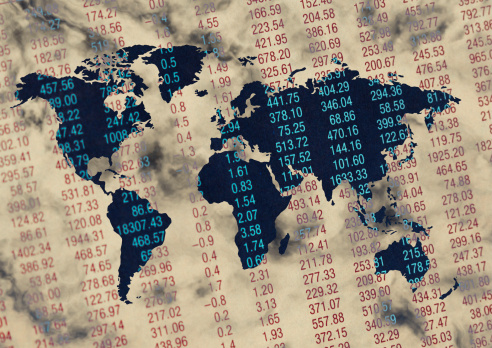Investing
PIMCO Sees Even Slower 2013 U.S. GDP Growth, Euro Recession
Published:
Last Updated:

Parikh’s outlook is not just for the United States, but that policies are at important crossroads in every major economy. Developed nations are struggling for a balance between cyclical stimulus and secular normality. He said, “2013 will be the year of policy change, with policymakers in major economies challenged to enact structural changes that spur private sector growth before government-balance-sheet-led growth is exhausted.”
Part of the issue is economics and part is politics. On the economics: global inventory replenishment and post-crisis productivity gains are behind us, with slowing corporate profit growth, flatlining commodity prices, and declining capital expenditures, lower industrial production, and stagnated global trade volume. On the policy side: developed countries are struggling to find the right fiscal and monetary policy, too much consumption versus investment, a growing “maldistribution” of income, and more.
Other issues addressed are rising global indebtedness along with higher global imbalances, global regulations are also on the rise, and also “deglobalization” is starting to enter the equation.
To make matters worse, PIMCO sees the United States in 2013 with a policy mix of untimely fiscal tightening and increasingly ineffective monetary easing with a mixed to relatively stable economic outlook. Here are some outlooks for 2013:
Parikh believes that Europe does not have an active growth policy for 2013 and expects the euro zone economy to shrink between 1% and 1.5% in 2013. In China, 2013 will meet weak external demand with its GDP growth of 6.5% to 7.5%. Japan’s economy will perhaps see more interesting developments than it has for several years with a more dovish and active Bank of Japan in 2013 likely to adopt more aggressive balance sheet policies with a PIMCO forecast of 0.5% to 1.0% growth.
Full details of the Parikh outlook can be seen here. Here are some other figures on the PIMCO table below:

JON C. OGG
Let’s face it: If your money is just sitting in a checking account, you’re losing value every single day. With most checking accounts offering little to no interest, the cash you worked so hard to save is gradually being eroded by inflation.
However, by moving that money into a high-yield savings account, you can put your cash to work, growing steadily with little to no effort on your part. In just a few clicks, you can set up a high-yield savings account and start earning interest immediately.
There are plenty of reputable banks and online platforms that offer competitive rates, and many of them come with zero fees and no minimum balance requirements. Click here to see if you’re earning the best possible rate on your money!
Thank you for reading! Have some feedback for us?
Contact the 24/7 Wall St. editorial team.